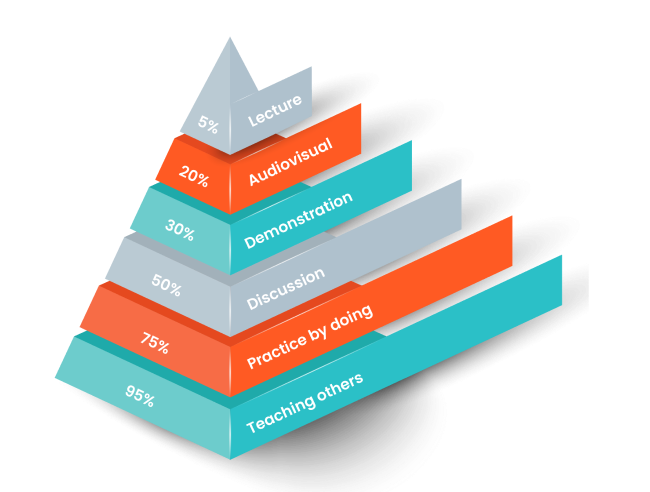
How Connected Worker Solutions Create Resilient Organizations
Discover how connected worker solutions deal with 6 major macro-environmental challenges.

In a previous blog, we discussed how manufacturers can tackle the global labor shortage with connected worker technology. This time, we will analyze 5 other global crises and how connected worker solutions deal with them.
To do that, we will use a framework called PESTLE—an abbreviation for Political, Economic, Societal, Technological, Legal, and Environmental—which is used in business analysis to investigate the global factors that impact a business’s markets, strategies, and operations.
Let’s dive in.
Political factors – Supply chains
Global crises like the China-U.S. trade war, coronavirus pandemic, and invasion of Ukraine have made it plain to manufacturers how fragile international supply chains are.
Manufacturers often rely on the steady inflow of specialized parts that are unmissable in the production of complex products like cars.
The supply-chain disruptions caused by the covid pandemic put a shift toward de-globalization into motion, which means that manufacturers are now increasingly seeking to produce parts locally.
Local production, however, carries problems of its own:
- Factories must produce unfamiliar, specialized products
- A larger workforce is needed to support an increase in production
- Workers must be flexible and multi-skilled
Add to that the global labor shortage and manufacturers have a threefold challenge: they need to attract employees in a tight labor market, train them into highly-skilled operators quickly, and make them as productive as possible.

Solution: global knowledge sharing
So, how do manufacturers turn local factories into reliable producers of specialized parts?
As indicated above, it all comes down to their workforce’s strength and flexibility.
Luckily, the shift toward de-globalization in physical space is balanced by the shift toward globalization in the realm of digital manufacturing solutions.
A Connected Worker Platform like 4Industry kills these two birds with one stone: while it is tailor-made to empower local frontline workers, it also encapsulates and connects global factory networks.
What’s most important for the global supply chain crisis is that a Connected Worker Platform enables both global knowledge sharing and autonomous learning on the job.
Overall, this enables manufacturers to:
- Exchange knowledge and best practices about new production methods with other factories quickly
- Leverage digital Knowledge Management to train and upskill their (new) workforce
This ultimately results in a workforce that’s easily adaptable to changing market circumstances.
Like to know more about digital Knowledge Management? Then you may find this whitepaper interesting.
Economic factors – inflation and interest rates
Economically, manufacturers have to deal with skyrocketing inflation and increasing interest rates, which have significant consequences like:
- Rising wages
- Rising material prices
- A decrease in investments
These problems—combined with a tight labor market—leave many manufacturers wondering how to boost productivity in a cost and labor-efficient way.
They need, in other words, a solution to ‘sweat their assets’ and keep up with the global economic downturn.
Solution: manage and improve productivity
A Connected Worker Platform gives manufacturers the insight to manage and get the most out of their workers and assets.
Firstly, the software tracks deviations, stores their data and uses Machine Learning to auto-suggest countermeasures if the deviation occurs again. This facilitates quick and straightforward problem-solving and improves productivity and OEE.
Connected Worker Platforms also track task completion, even including the time it takes to complete single steps, which allows manufacturers to locate and ameliorate any inefficiencies.
RCA tools are completely digital. Analysis results are stored in a central database and can also be made actionable through auto-suggestions.
Ultimately, these factors result in an improved decision-making ability, as they give Continuous Improvement teams the necessary data to find areas for improvement and make operators and machines work at optimal efficiency.

Societal factors – Generational shift
Experienced operators from the baby boomer generation are steadily going into retirement—taking valuable tribal knowledge with them. Meanwhile, a young and inexperienced generation is entering the manufacturing workforce, demanding an entirely new way of working.
These so-called digital natives are used to the intuitiveness, automation and instant actionability of smart technology—and they expect their workplace tools to have the same comforts.
It’s no wonder then that manufacturers are having trouble attracting and retaining these young operators, as present-day shop floor work still involves a lot of manual, paper-based administrative work.
There is furthermore the already-mentioned problem of training: how can unskilled greenhorns be trained to do as good a job as operators with decade-long experience?
Solution: digital Knowledge and Task Management
Connected Worker Platforms with digital Knowledge and Task Management systems are tailor-made to tackle the above problems—first and foremost because they meet the requirements digital natives seek in their workplace tools.
Mobile-enabled and highly automated, this software gathers all the necessary workflows needed for daily shop floor activities behind a single pane of glass.
A large amount of paperwork is thereby removed from the shop floor, resulting in an increase in more exciting, value-adding work.
The difficulty of training young workers can be dealt with by enabling experienced workers to easily capture their knowledge in a central database.
Intuitive features for the creation of knowledge take away a lot of the hassle that is part and parcel of traditional methods like Word and Excel.
This valuable knowledge can then be used for training purposes; furthermore, as all knowledge exists on mobile and can be enriched by visual media, new operators are enabled to do unfamiliar work autonomously. As learning on the job is much more effective than classroom training, operators can be trained much quicker, ultimately resulting in a workforce that’s well-trained, flexible, and multi-skilled.

Technological factors – Internet of Things (IoT)
Industry 4.0 technologies like Big Data, Machine Learning, and IoT offer manufacturers a tremendous opportunity to take their operations to the next level.
However, many are lagging behind in their digital transformation, as research by McKinsey shows. The same study also shows that this lack of digital maturity has left organizations ill-prepared to deal with a global crisis like the coronavirus pandemic.
IoT projects, specifically, are a common pain point for manufacturers; Cisco estimates that almost 75% of IoT initiatives are unsuccessful.
That is, to say the least, a staggering rate—and it’s worth it to explore why manufacturers are not succeeding in leveraging the potential of IoT.
Solution: transform data into workflows
Another McKinsey report sheds light on the reason why so many IoT initiatives fail.
According to them, the key problem is that manufacturers aren’t able to turn their raw IoT data into actionable triggers.
In other words: they need a workflow system that notifies operators when an IoT sensor is triggered and instructs them what action they have to perform.
Oftentimes, a factory will have big, wall-mounted TV screens with IoT data on them that is mostly unread.
A Connected Worker Platform like 4Industry can transform this data into intelligible triggers that operators receive on their pocket-held device.
If, for example, a sensor indicates that a certain temperature-threshold has been exceeded, the following things will happen:
- Operators in the vicinity receive a notification alerting them about the issue
- Machine learning algorithms auto-suggest knowledge, based on historic data, to resolve the issue quickly
- Leadership receive a notification, allowing them to track if the issue has been resolved
Legal factors – Regulations
The increasing number of environmental, labor condition, and product safety regulations poses an immense challenge for manufacturers.
In the United States, for example, the National Association of Manufacturers (NAM) discovered that U.S. manufacturers undergo “297,696 restrictions on their operations from federal regulations.”
Over 100,000 of these restrictions have to do with Health and Safety alone—it should therefore be obvious that compliance is becoming an increasingly difficult task.
Solution: use digital tools to ensure regulatory compliance
Although connected worker solutions aren’t a panacea to such a heavily regulatory burden, they can be very effective at monitoring and improving compliance.
4Industry, for example, can automatically trigger safety permits when operational tasks are assigned to operators.
Furthermore, in-app instructions notify operators of what PPE they have to wear when performing tasks.
Safety incidents can easily be registered (with attached images, if needed) and sent to the right personnel.
Furthermore, pre-configured, regularly occurring audits can ensure that a facility is always compliant with regulations.
This means, for example, that Food & Beverage plants can create digital HACCP audits.
The completion rate of these is tracked digitally and any data is stored in a central database, ensuring that the books are always in order when it’s time for an audit.

Environmental – Global warming and pollution
Global warming and rising energy prices are prompting manufacturers to rethink their energy consumption, while pollution and resource scarcity necessitate new solutions to reduce waste.
A straightforward solution to reducing waste in factories is focusing on continuous improvement (CI).
Many factories, however, have sub-optimal continuous improvement practices; feedback systems are often paper-based and therefore difficult to organize into larger CI projects.
The same goes for root cause analyses (RCAs): these either exist on paper or on unconnected digital systems like Word, which prevents their insights from benefiting the factory as much as they can.
Solution: automated Continuous Improvement flows
If feedback systems and RCA tools are part of a Connected Worker Platform, their benefits are enormously enriched.
Let’s start with feedback: 4Industry, for instance, has a feedback button that can be triggered from anywhere in the app. This enables operators to suggest improvements to anything in the app like SOPs, manuals, checklists, and so on.
Feedback is stored in a central, intuitive environment and can be easily gathered into a CI project.
Implementing smaller changes to e.g. knowledge articles is instantaneous and factory-wide—and there’s even the ability to share improvements with other global factories.
The same goes for root cause analyses: RCA results are stored centrally and can be shared with other global plants, turning local solutions into global best practices.
Altogether, these automated continuous improvement flows will result in a more efficient, less wasteful factory. And as these local can be extended to other global factories, their impact is significantly improved.
Related Articles


